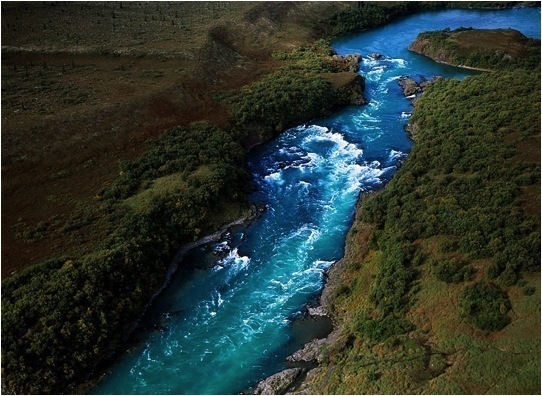Alaska is a land of contrasts. We are “resource”-rich. Our economy depends largely on revenues from non-renewable resource extraction: oil, natural gas and coal. And Alaska is “wilderness”-rich. Our temperate rainforest, subarctic and arctic ecosystems are fully functioning and largely intact. Last summer, a million and a half visitors traveled here to experience our wilderness and wildlife. The struggle to achieve a balance between these land values is keenly felt throughout the state.
This struggle is currently being played out in Southwest Alaska at the site of the proposed Pebble Mine. The mine is centered on the major watersheds of Bristol Bay. Bristol Bay is the world’s most productive fishery for all five species of wild salmon. The resources Pebble hopes to extract include gold and copper. The Pebble Limited Partnership plan calls for strip mining an area over 186 square miles in size. That’s over 20 times the size of ALL of the current mines in Alaska!
The stakes here are high. The world’s most productive fishery, and one of the last remaining wild salmon resources, could be forever diminished in order to obtain a finite resource. The fishery brings in $310 million annually to Alaska. If managed correctly, it should continue into perpetuity.
The mine would be one of the most massive works of man ever constructed. Toxic tailings would be stored behind earthen dams built to 750 feet high, a storage unit larger than the Three Gorges Dam in China. The tailings would contain sulfide wastes which, when exposed to air, turn into sulfuric acid. These wastes have no half life, and will never break down. This means they need to be stored underwater forever in order to keep them from leaching back into the environment. Brentwood Higman, in the book “A Long Trek Home” states “In geological terms, forever doesn’t even make sense!” Read the webpage by Ground truth Trekking on the project.
Could earthquakes damage the storage dams? Could funds for storage and maintenance run out? Does in perpetuity make sense for hazardous materials? Compare the Hanford Nuclear site along the Columbia River in Washington State. Though now decommissioned, it now takes more personnel and funds to secure the wastes and cleanup than the plant cost previously to operate. What is the ultimate price of extracting these limited resources?
For a comprehensive article on why Pebble Mine is a dangerous idea, consider reading Ted Williams article from the Incite section of Audubon Magazine.




